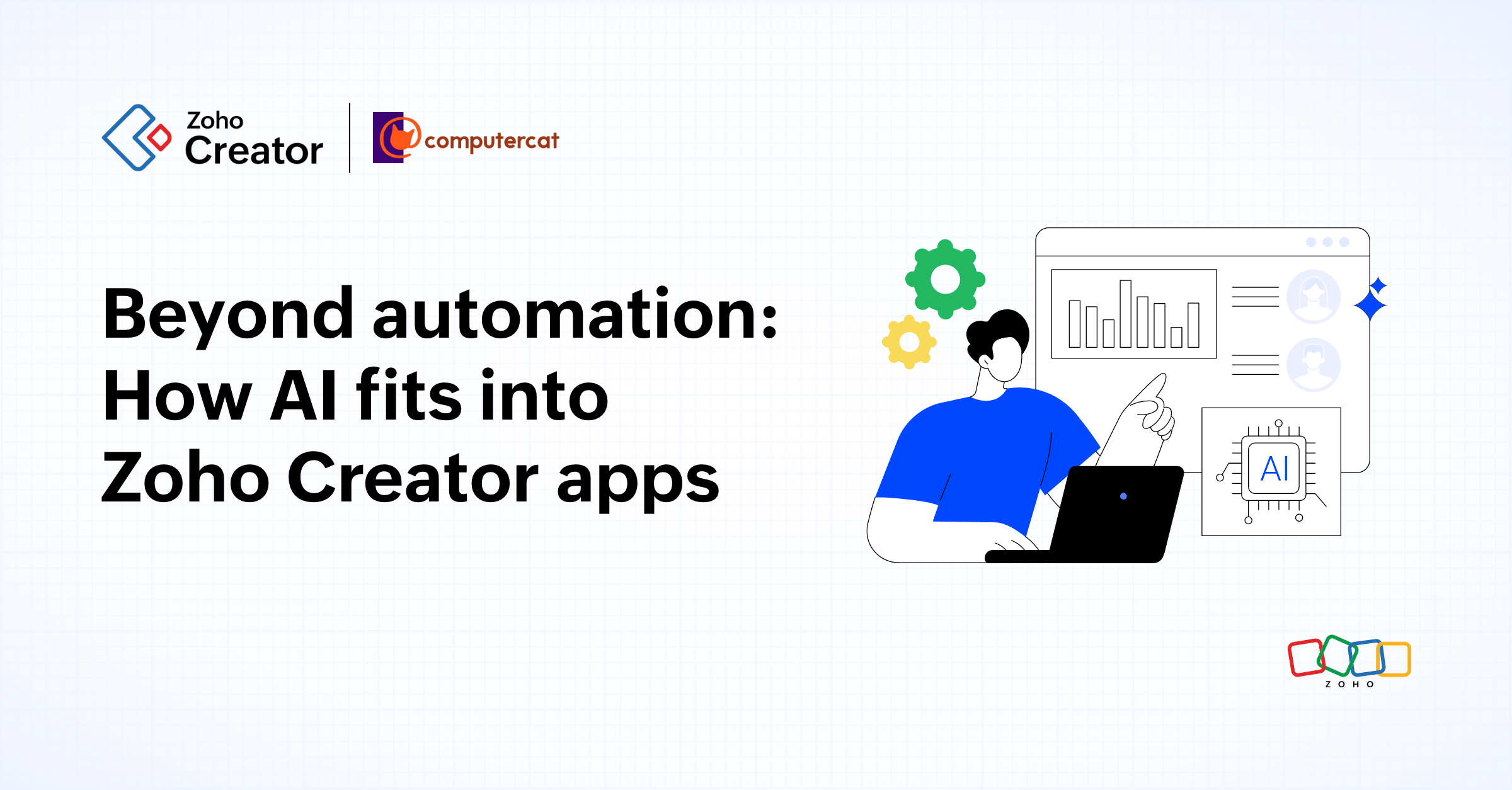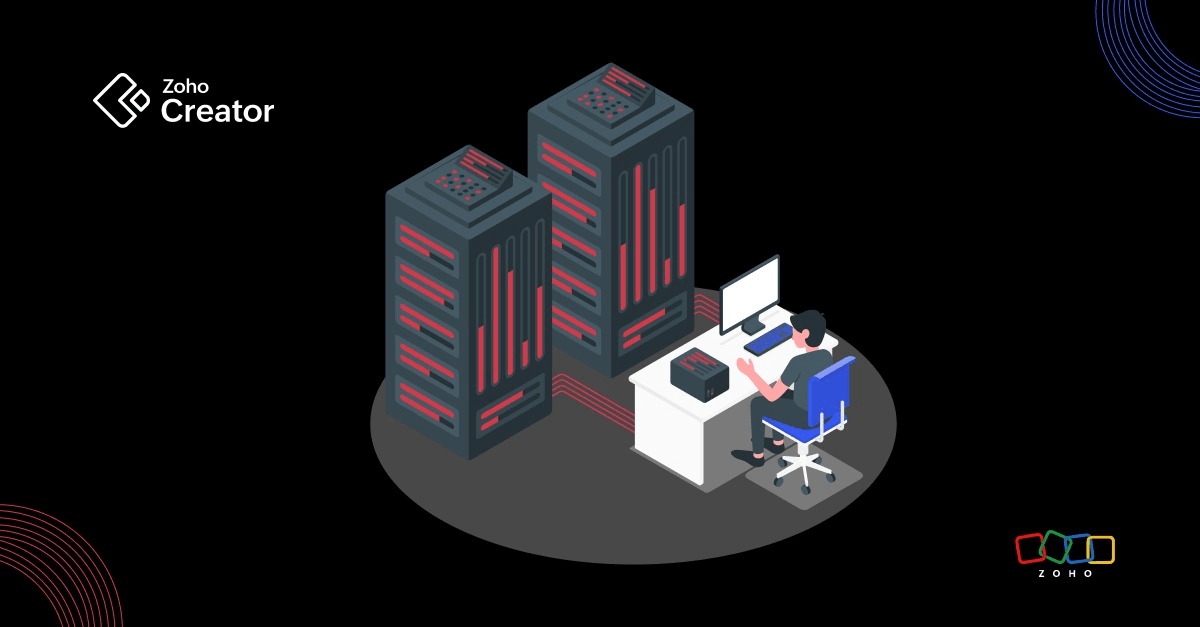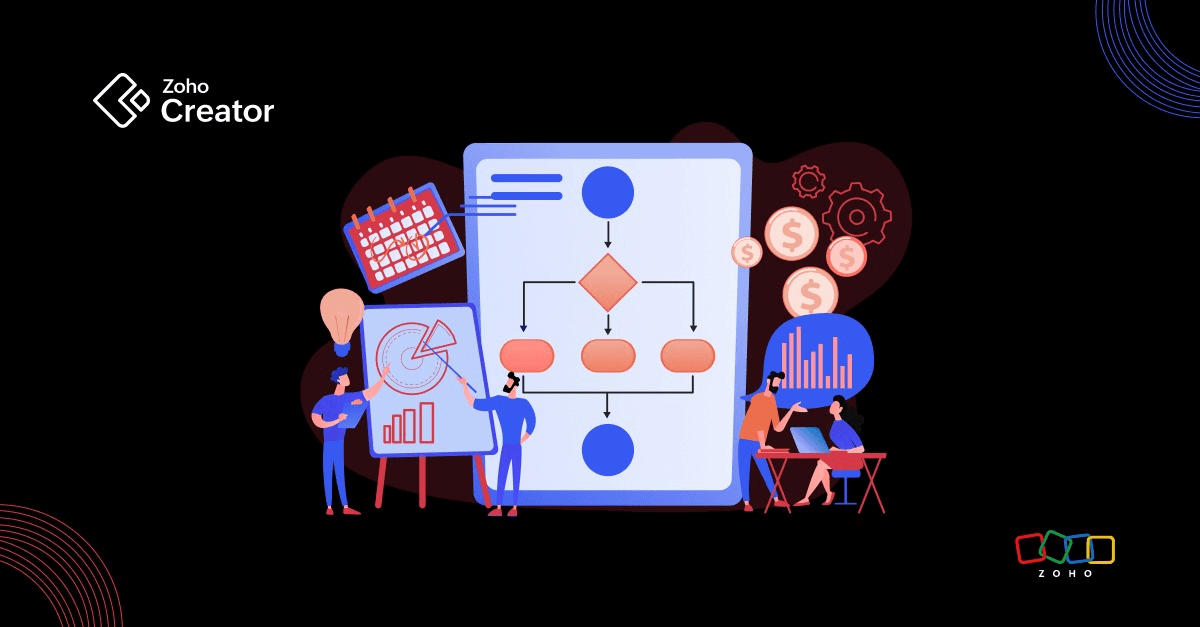- HOME
- Know Your Tech
- Citizen automation and citizen development: Everything you need to know
Citizen automation and citizen development: Everything you need to know
- Last Updated : April 25, 2023
- 853 Views
- 4 Min Read
Citizen automation is a buzzword in the world of digital transformation, making waves in the citizen development movement. So what's citizen automation? What's citizen development? And how are they different? In this blog, we'll learn what these terms are, their impact on the technological landscape, and what it means for the future of IT.
What is citizen development?
Citizen development is a trend that encompasses the routine of training nontechnical personnel within organizations to build process-centric solutions for both personal and business requirements. This is achieved using low-code/no-code (LCNC) platforms, which come with visual building features and a short learning curve. Citizen development happens within the guardrails set by IT, ensuring the software built is IT-compliant. We've covered the need for citizen development and how low-code aids the process in one of our previous blogs.
What is citizen automation?
While citizen development refers to individuals building applications for smaller use cases and department-specific needs, citizen automation focuses on organization-wide automation. This involves a more complicated tech stack, and needs thorough scrutiny, since the implications are long-lasting and affects the future of the organization.
Citizen automation is the process of democratizing technology, enabling employees outside IT departments, and without prior expertise, to learn and build advanced software systems using robotic process automation (RPA), data science, and artificial intelligence.
How are citizen automation and citizen development different?
Citizen development and citizen automation fall under the same umbrella, but with a different scope. When a citizen development drill leads to org-wide changes, and involves technologies like machine learning models and robotic process automation—that are otherwise built using sophisticated tools—it can be called citizen automation.
The ultimate goal is for enterprise automation and citizen automation to converge, maximizing the throughput of the company. Since it's business user-driven, the governance and supervision of a higher IT authority is mandatory. In most cases, low-code platforms that are IT-compliant are at the helm of citizen automation, which makes IT governance easy. If the tools used are not compliant, it can lead to shadow IT.
Benefits of citizen automation
The benefits of citizen automation are both short-term and long-term, and also intangible at times. Some of the high-impact areas of citizen automation are:
More efficient software life cycle
It's always beneficial for the organization when business analysts and users can build software tailored to their needs themselves. In the process, they can upskill themselves by becoming familiar with the latest technologies that can shape the future of the company.
Improved business-IT collaboration
Shadow IT, or tech usage without IT approval, is a problem for many organizations. This happens primarily due to overload on IT teams, or a communication gap in the IT pipeline. Company-wide citizen automation programs that are sanctioned by IT departments can not only eliminate shadow IT but also improve the time to market of automation software.
Save on costs—technical and operational
Citizen automation can address the IT worker shortage by allowing nontechnical staff to build world-class software. This not only reduces the load on IT teams but also reduces the working capital needed for hiring developers.
Low-code platforms are at the heart of citizen automation
Citizen automation programs at large enterprises are run on low-code/no-code platforms and come with a plethora of features and advantages. So, what are low-code and no-code platforms?
Low-code/no-code is an approach to application building that bypasses the bottlenecks that usually go hand in hand with software development. These platforms enable graphical app building and offer guided scripting to bridge the software development skills gap.
Some of the reasons low-code/no-code platforms are the best fit for citizen automation are:
Privacy and security
The best low-code platforms are compliant with the latest worldwide security and privacy regulations. This secures data and reduces the risk of violations that otherwise could have major consequences for a company.
Zero backend configuration
Low-code platforms are cloud-based and, hence, involve no backend configuration. The IDEs and servers that make integrations a one-click process are already set up on the provider's end. These platforms are also scalable and device and platform independent.
Short learning curve
The visual building environment that low-code platforms come with use drag-and-drop functionality to make it easier for citizen developers to adopt software development.
Support for the latest technologies
Low-code and no-code platforms are equipped with the latest technologies, like robotic process automation, artificial intelligence, machine learning models, augmented reality, and an array of built-in features that support localization.
Zoho Creator: A powerful citizen automation platform
Zoho Creator is a low-code citizen automation platform from the Zoho suite, which enables developers of all expertise levels—from citizen developers to pro-code professionals—to build business solutions of all sizes. This all-in-one solution builder comes with robotic process automation, AI-powered features, and business process management tools that make it a go-to for enterprises and organizations.
 Akhilesh Balakrishnan
Akhilesh BalakrishnanAkhilesh is a product marketer at Zoho Creator with a focus on citizen development and its importance in the future of IT. If not at work, you can find him watching sports, reading politics, or listening to heavy metal.



